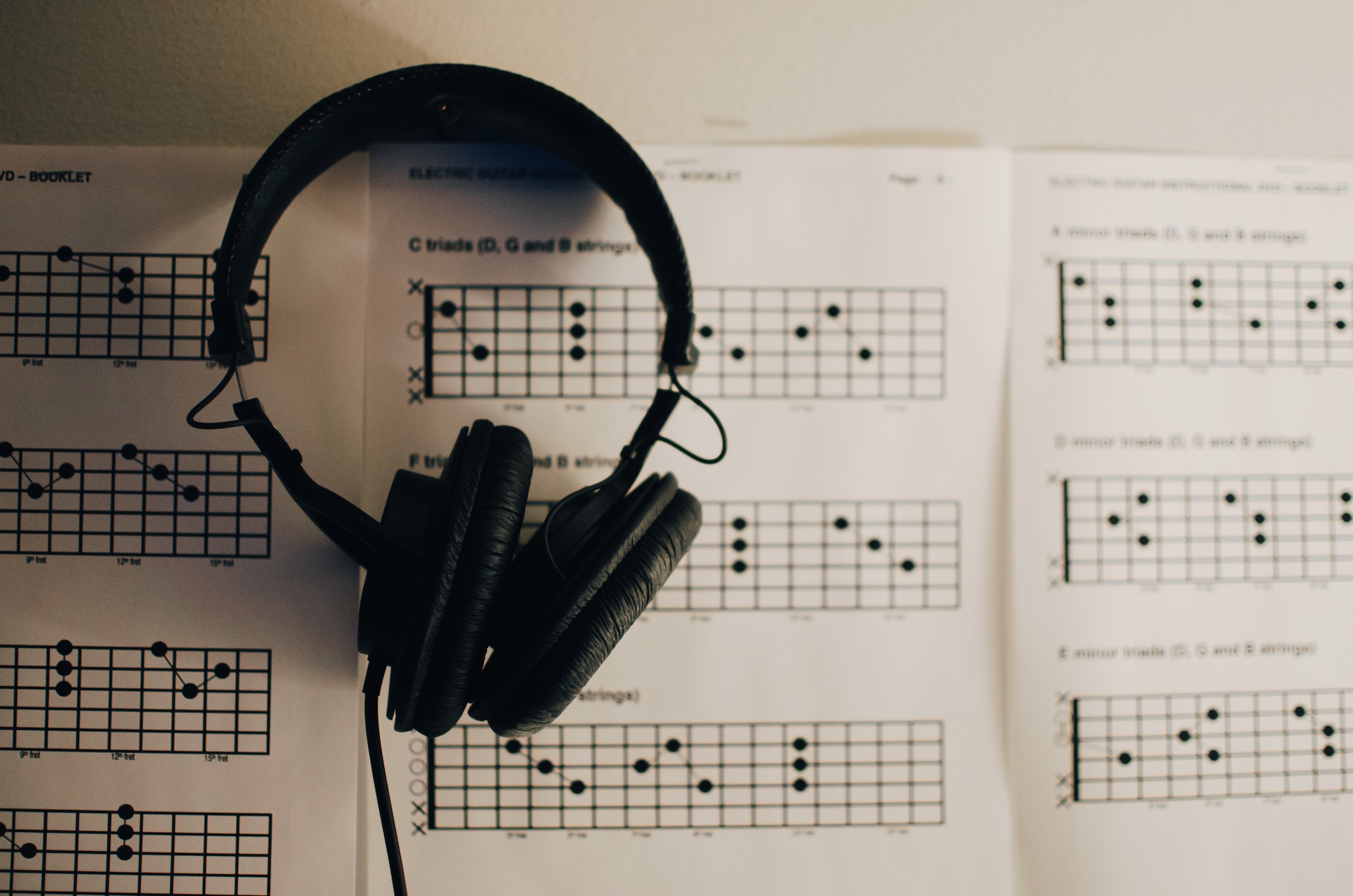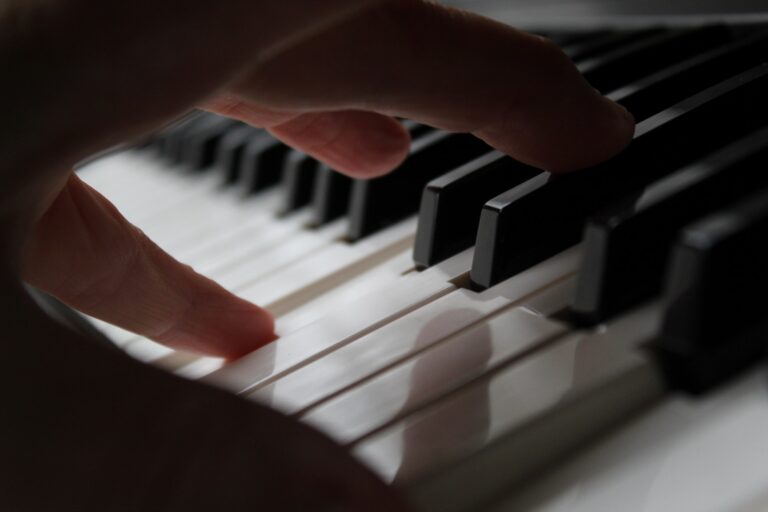Understanding Diatonic Harmony
Diatonic harmony, a multifaceted concept depending on its context and definition, is central to music theory. In this blog, we’ll focus on diatonic harmony, as the harmonies and chords are exclusively derived from the notes of the major scale. Understanding diatonic harmony is essential because it underpins the vast majority of music, where melodies and chords originate from the major scale’s seven notes.
Whether you’re a beginner seeking to comprehend music theory essentials or a seasoned musician looking to elevate your compositions, this article will serve as a valuable guide on understanding diatonic harmony’s profound impact on the world of music.
Why is it Important to Understand Diatonic Harmony?
Diatonic harmony is a fundamental concept in music theory that forms the backbone of countless musical compositions. At its core, diatonic harmony refers to the harmonization of a piece of music using chords derived from the diatonic scale of a particular key. This system is based on the seven notes of the major and natural minor scales and plays a pivotal role in shaping music’s emotional and tonal characteristics.
Understanding diatonic harmony is crucial for musicians, composers, and enthusiasts alike. It provides a solid foundation for coherently and balanced analysis, composing, and arranging music. By grasping the relationships between chords within the diatonic scale, musicians can create captivating progressions and cadences that evoke specific moods and feelings.
The Basics of Diatonic Harmony: Explanation & Construction
The diatonic scale is a seven-note musical scale that forms the foundation of diatonic harmony. The major scale, often recognized by the familiar “do – re – mi – fa – sol – la – ti – do,” consists of seven notes arranged in a specific sequence. This sequence of intervals (the space between notes) follows a consistent pattern: whole-whole-half-whole-whole-whole-half.
For example, in the key of C major, this pattern translates to C (w) D (w) E (h) F (w) G (w) A (w) B (h) C. This sequence of whole and half steps forms the major scale, acting as the foundation for the harmonies and chords we hear in music.
Major and Minor Diatonic Triads
Within the diatonic scale of any key, musicians can construct diatonic triads – three-note chords that are built on each degree of the scale. These triads can be classified as major or minor, depending on the quality of the intervals between their constituent notes. For example, in a major key, the diatonic triads follow the pattern: major-minor-minor-major-major-minor-diminished.
Understanding the Relationship between Chords within the Diatonic Scale
The key to unlocking diatonic harmony is understanding the inherent relationships between chords within a given key. The most crucial relationship is the tonic chord (the I chord), which serves as the key’s home chord and establishes a sense of resolution. Other relationships include the dominant (V) chord, which leads to the tonic, and the subdominant (IV) chord, providing stability.
Identifying Diatonic Chords in a Key
To identify diatonic chords in a key, musicians often use Roman numeral notation to represent each chord based on its degree in the scale. Capital Roman numerals represent major chords, while lowercase numerals denote minor chords. For instance, in the key of C major, the diatonic chords are written as I (C major), ii (D minor), iii (E minor), IV (F major), V (G major), vi (A minor), and vii° (B diminished).
If the Nashville Number System is being used, then chords would be written as 1 (C major), 2- (D minor), 3- (E minor), 4 (F major), 5 (G major), 6- (A minor), and 7° (B diminished)
Mastering the basics of diatonic harmony lays a solid groundwork for exploring more advanced harmonic concepts and unlocks endless creative possibilities in music composition and performance.
Diatonic Harmony in Practice
Diatonic harmonies are directly linked to the major scale, allowing us to construct a chord from each of its seven notes. For example, in the key of C major, the diatonic harmonies are C, Dm, Em, F, G, Am, and Bdim. The numeric representation follows a consistent pattern of chord qualities: major, minor, minor, major, major, minor, diminished.
This pattern remains unchanged when transposing to different keys. For instance, the diatonic harmonies in the key of G major become G, Am, Bm, C, D, Em, F#dim, with the exact numeric representation. Recognizing these chord qualities and patterns is crucial for a deeper understanding of diatonic harmony.
Identifying Diatonic Chord Progressions
Identifying chord progressions, whether diatonic or not, often begins by focusing on the bass note—the lowest note that defines the chord’s root. Listening closely, one can determine whether the chord is major or minor. Recognizing common chord patterns becomes more intuitive as you familiarize yourself with the diatonic chord qualities.
For example, if you discover a song is in the key of E major, you’ll find that the second, third, and sixth chords are minor, while the first, fourth, and fifth chords are major. The seventh chord in the key is diminished, although it’s rarely used in pop music.
Common Chord Progressions
Surprisingly, most popular music revolves around a handful of chord progressions. Here are some of the most common progressions, listed by number for easy transposition to any key:
- Turnaround progression (also known as rhythm changes): 1 6m 2m 5
- Axis progression: 1 5 6m 4
- Country progression: 1 4 1 5
- Six-minor progression: 6m 4 1 5
- Do-Wop progression: 1 6m 4 5
- Jazz progression: 2m 5 1 1
- Rock progression: 1 4 5
Playing these chord progressions in different keys and listening attentively can deepen your grasp of diatonic harmony.
Expanding Diatonic Harmony with Seventh Chords
In pursuing richer and more complex harmonies, diatonic seventh chords emerge as a powerful extension of diatonic harmony. These chords go beyond the triads by adding the seventh note to each chord within the diatonic scale. The result is a set of chords with an added layer of color and tension that opens up exciting possibilities for musical expression.
Understanding Major and Minor Seventh Chords in the Diatonic Scale
Within the diatonic scale are two primary types of diatonic seventh chords: major seventh chords and minor seventh chords. The major seventh chord retains the qualities of the major triad while including the major seventh interval. On the other hand, the minor seventh chord preserves the characteristics of the minor triad while incorporating the minor seventh interval. These chords exhibit distinct emotional qualities, with major seventh chords offering a sense of sweetness and resolution and minor seventh chords exuding a more melancholy and reflective vibe.
Seventh Chord Inversions and Their Role in Harmony
To add further depth to diatonic harmony, musicians can explore seventh-chord inversions. Different chord voicings are created by rearranging the notes of a seventh chord, each with its unique character. Inversions contribute to smooth voice leading and seamless transitions between chords, promoting harmonic fluidity and enhancing musical progression.
Enhancing Musical Progressions with Diatonic Seventh Chords
Integrating diatonic seventh chords into musical progressions elevates compositions to new heights. These chords introduce subtle tensions and resolutions, providing a dynamic contrast to traditional triadic harmonies. By skillfully incorporating them into a piece, composers can evoke a wide range of emotions, captivate listeners, and infuse their music with sophistication and depth.
Whether in jazz improvisations, soulful ballads, or contemporary pop hits, diatonic seventh chords are invaluable for musicians seeking to expand their harmonic palette. Understanding their characteristics, exploring inversions, and employing them thoughtfully in musical progressions enriches compositions, making them resonate with audiences profoundly. As a result, diatonic harmony with seventh chords remains an essential aspect of any musician’s journey toward crafting captivating and emotionally resonant musical experiences.
The Coda
Diatonic harmony forms the essence of the music we cherish, providing a solid foundation for captivating compositions. Through a deeper understanding of its structure and identifying common chord progressions, we can elevate our musical experience and unlock a world of creativity.
If you’re eager to delve further into diatonic harmony or explore the vast realm of music theory, we invite you to embark on this journey with Green Hills Guitar Studio. Our expert instructors offer private lessons, both online and in-person, tailored to your individual needs and aspirations. Whether you’re a beginner or an experienced musician, our dedicated team is here to nurture your musical growth and passion.
Take advantage of this opportunity to enhance your musical journey! Contact Green Hills Guitar Studio today, and let’s harmonize together. Happy playing!







